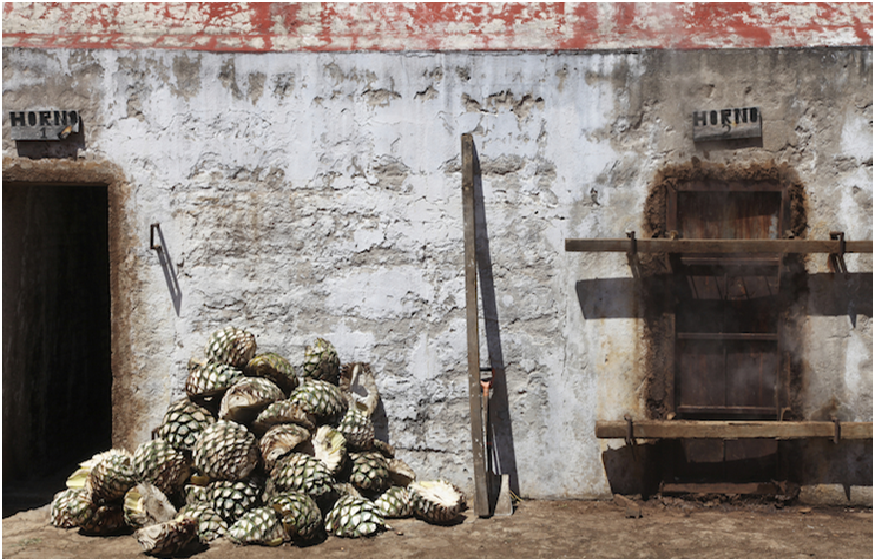You should know that the overall tequila production process comes with specific regulations each manufacturer has to follow. It would be best if you used blue agave,a domestic plant from specific Mexican regions.
The easiest way to learn everything about tequila is by checking here for more information.
We can divide the production process into seven essential steps. Every single step is regulated by Consejo Regulator de Tequila, which will ensure that each manufacturer follows strict guidelines that will provide you a perfect quality.
Another important consideration is that each distillery features a particular source of agave, techniques, quality control, and processes that will affect the overall taste.
Let us start from the beginning.
1.Harvesting
The first step you should remember includes harvesting, which features planting and dealing with agave plants, which is a manual effort that relies on past techniques. Everything depends on the distillery, but generally, they have worked for generations to obtain proper recognition.
You should know that each plant has to grow in upright and neat rows between six and ten years. It would be best if you tend it properly during that time until it gets ripe for harvesting it with ease.
The Jimador or harvester will remove agave leaves by using Coa or a sharp curved tool. At the same time, he/she can trim leaves that will protect the heart until you can extract them from the ground.
Only pina or the heart of the agave is essential for making tequila beverage. Generally, mature plants tend to weigh between 80 and 300 pounds. The size of it is vital because the larger heart will bring the more significant sugar content.
The older the agave is, the longer you will have to wait for it to convert starches into fermented sugars. Generally, you will need at least fifteen pounds of pinas to create a single liter of tequila.
2.Cooking
The next essential step requires stainless steel autoclaves or traditional brick ovens to create and activate a chemical process that will convert complex carbs within the pina into fermentable sugars.
Remember that cooking will also soften the agave’s heart, which means that the sugar extraction will be much easier than before.
If you wish to learn more about the production process, you should watch this video: https://www.youtube.com/watch?v=vVGQC1rmiTQ for additional info.
3.Extraction
As soon as you cook it, you need to transport agave heads to the milling area for additional sugar extraction. It means that specific machines will crush pinas with an idea to release the juice that should be fermented in the future.
Remember that the traditional method involves using a giant grinding wheel.
Of course, we have mentioned that technology has advanced, and today, you can find a wide array of mechanical alternatives to manual crushers that will separate fiber from the juice.
As soon as you mince all pinas, you should wash them with water and place them in strain to remove additional juices.
4.Fermentation
When it comes to fermentation, you should know that this crucial step would transform sugars into alcohol using either stainless steel tanks or large wooden vats. You can add yeast to control and accelerate fermentation.
Remember that you need to follow regulations, which means that yeast tends to grow naturally on agave leaves, which you should use. Of course, you can find modern distilleries that specifically cultivate wild yeast.
Generally, the fermentation lasts between one and two weeks, depending on the method you wish to use throughout the process.
5.Distillation
The next crucial step is distillation, in which you can separate ferments by using stainless steel pot stills or other more advanced options.
Even though some methods include three separate distillations, most of them will undergo two processes. The first one is smashing, which will take a few hours and create a liquid of up to twenty percent of alcohol.
The second one is rectification, which requires approximately four hours, and the alcohol percentage can reach up to fifty-five percent. The double distillation can lead to Blanco or silver tequila.
6.Aging
It is vital to use American or French white oak barrels for containers you should place tequila to age. In most cases, these barrels were used for bourbon beforehand, which will create a significant and unique taste.
Everything depends on your preferences, but you can find Reposados, which are aged up to one year. On the other hand, Anejos tends to age between one and three years, while Extra Anejos tends to age more than three years depending on preferences.
You can find numerous tequila stores in Old Town San Diego, which is something you should check out afterward.
You should know that the longer it ages, the more tannins and color the product would have. Of course, you should consider the condition of barrels to determine the taste you will get.
7.Bottling
Finally, the last step is bottling it in five different Mexican states where you can do it properly. Since you can bottle it up in Mexico, you should create a proper label that will follow regulations along the way.





